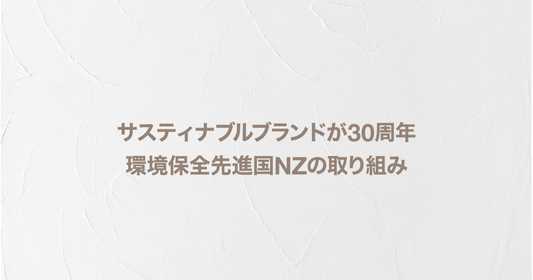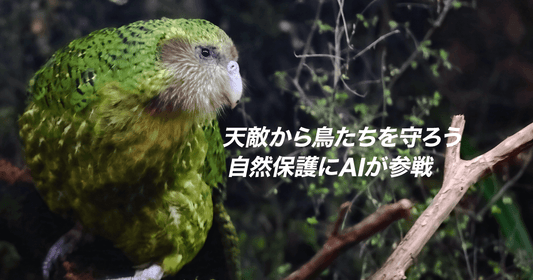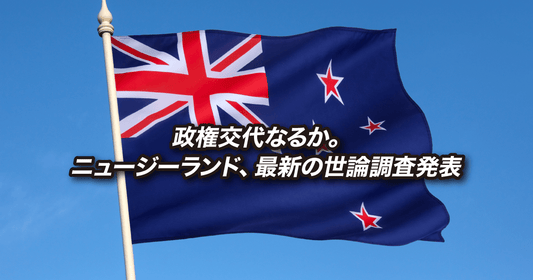I'm thinking of going to see a movie about wine next time!
That's great! I'm sure watching movies about wine can be a fun way to learn about wine.
This time, I would like to introduce a wine documentary film called "Georgia, the Birthplace of Wine."

Source: Official website of the movie "Georgia, the birthplace of wine" - UPLINK
This work focuses on the "qvevri method," a unique wine-making method in Georgia (formerly known as Georgia), which is considered the birthplace of wine.
A "qvevri" is a large clay pot that is buried in the ground and used to make wine in Georgia.
Throughout their long history, the Georgian people have preserved their traditional methods even in times of hardship, and have passed them down to the present day.
The film depicts their winemaking and their lives as they are. By the way, it seems that this film is not currently available on DVD or for streaming. With more and more people spending their time at home, it would be great if we could watch these slightly nerdy films at home soon.
I went to see the movie in January 2020.
[Characters in this article]

- Mika is 35 years old and works at an apparel company. She is getting into wine and is really interested in wine glasses.

- Iwasu is a sommelier who oversees this website. He runs a bar in Nagoya that stocks a wide range of New Zealand wines.
More information on "Georgia, the birthplace of wine"
The film we are introducing this time , "Shozia, Where Wine Is Born," is one of two films released simultaneously by distribution company Uplink with the theme of "A journey through natural wine through film."
| Movie genre | documentary |
| theme | Natural wine, Georgian wine |
| Original title | Our blood is wine |
| Production year/country | 2018/USA |
| time | 78 minutes |
| Director, Filming, Editing | Emily Railsback |
| Cast | Jeremy Quinn, et al. |
| Official website | ▶Movie "Georgia, the birthplace of wine" |
By the way, another film released at the same time was "Wine Calling," a movie about French natural wine.
Movie Review
What made the biggest impression on me in the film was the huge qvevri jar.
Burying these clay qvevri in the ground to make wine is the traditional Georgian wine-making method, and it was very dynamic. Georgian people describe it as follows:
Grapes grown in the earth are entrusted back to Mother Earth
This method of "producing wine using the power of the earth" seemed to me to be the polar opposite of winemaking in large factories using stainless steel tanks.
Qvevri is a traditional craft that can only be made by specialized artisans with advanced skills. It seems that there are fewer people who can make it now. Furthermore, maintenance such as washing the pots is hard work, so we could see the difficulties of continuing to preserve the tradition.
I was impressed by how the Georgian people continue to preserve their traditional winemaking methods, no matter how difficult the circumstances!
For them, making and drinking wine seemed to be a part of their lives.
The traditional choral-like music played throughout the film was also impressive, making me feel like I was able to share a little of the slow-paced time in Georgia.

Source: Official website of the movie "Georgia, the birthplace of wine" - UPLINK
The movie had a relaxed atmosphere overall, so I was able to relax and watch it! Georgian winemaking was really interesting. It's great to be able to learn about wine through movies like this. I'd like to see something else!
Yes, I think we'll be spending more time at home in 2020, so it would be nice to relax with a glass of wine and watch a wine movie!
Behind the Scenes of Filmmaking
This film is the product of great care and passion from director Emily Railsback , a Chicago-based filmmaker, designer and screenwriter.
She made this film because she was inspired by Georgian people's expressions of love and their traditional polyphony music. Polyphony (multi-voice chorus) is music like this (↓).
Furthermore, he became interested in the precious indigenous grape varieties growing in private gardens in Georgia, and decided to carry out long-term research in order to convey the true process of winemaking.
Amazingly, the film was shot entirely on an iPhone because she was "tired of wine movies that make everything seem sexy."
The film's host is Jeremy Quinn , one of the most accomplished and experienced sommeliers in the U.S. With nearly 20 years of experience as a sommelier, he has traveled to more than 24 countries to research wine.
The serious attitude of the production team helped the local people to open up, and it seemed as if they were able to capture their natural expressions and everyday behavior on film.
Georgia is the country of wine
From here on, I'd like to talk about "Georgia" and "Georgian wine" which appeared in the film.
There are various theories about the origin of wine, but in recent years, the most likely origin is the "Caucasus Mountains region ." Currently, Azerbaijan, Armenia, and Georgia are considered to be the countries that originated wine, but Georgia is thought to have the longest history of wine among the three.
Georgia is the birthplace of wine, but not many people in Japan know much about it. Let's take a look at what kind of country it is.
What kind of country is Georgia?
Georgia is a small country in Eastern Europe, located between the Black Sea and the Caspian Sea.
It was previously called Georgia , but has been called by its current name in Japan since 2015.
| Country | Georgia (formerly Georgia) |
| capital | Tbilisi |
| population | 3.9 million people |
| Official Language | Georgian |
It may not be a very familiar country in Japan, but it has become increasingly popular as a tourist destination in recent years.
It has a peaceful atmosphere where old townscapes blend with nature, and the subway is well-developed in the suburbs of the capital, Tbilisi , making it easy to get around. Because it is located next to Europe, Asia, and the Middle East, it also has an appealing food culture influenced by many different places.
About Georgian wine
Georgian wine has a long history, and they still produce natural wines today, with the same old traditions. I will briefly explain the following three characteristics:- Georgian wine history
- The Qvevri method is a UNESCO Intangible Cultural Heritage
- Famous orange wine producing region
Georgia's wine history (wine culture that has survived hardships)
Georgia first produced wine around 6,000 BC. Grape seeds were found in Qvevri jars, which are considered to be the oldest traces of wine in the world. In other words, the wine culture has been passed down for about 8,000 years until today.Throughout its history, Georgian wine has come close to disappearing several times.
Originally, the Georgian region was home to a large number of Christians, and wine developed there as an important item used in Mass. However, the region was ruled by the Islamic nations of the Ottoman Turks, the Seljuk Turks, and the Abbasid Caliphate, and as a result, the wine culture was in danger of being lost.
Even in such harsh conditions, some Georgian farmers quietly continued to grow grapes to ensure a steady supply of wine.
However, after the Islamic occupation ended, the Soviet occupation came. During this period, wine making was encouraged, but only cheap mass-produced wine was made. Traditional wine once again went into decline.
After going through many twists and turns, the Soviet Union collapsed and Georgia gained independence. Georgian winemaking was finally revived and began to attract international attention.
Georgia is said to have 525 indigenous grape varieties , which is equivalent to one third of the world's total grape varieties.
An indigenous grape variety that has been protected by the Georgian people through the ages.
When you go to a particular wine-producing region, you are sure to find a variety that is only found there; that's how many varieties there are in Georgian wine.
The Qvevri method is a UNESCO Intangible Cultural Heritage
"Qvevri" is not pottery, but porcelain (ceramic) that is fired at a high temperature of 1,200 degrees. It is made from high-purity clay.

The method of making wine using qvevri was registered as a UNESCO World Intangible Cultural Heritage in 2013. There are many World Heritage sites related to wine, but Georgia is the only one that has been designated as a World Heritage site for its "making method" rather than its scenery or history.
The method is to crush the grapes in a wooden barrel called a "Satnaheri" by foot, and ferment them with wild yeast without adding any additives. The qvevri containing the skins and juice is buried in the ground where the temperature is stable, and the wine is left to ferment and mature slowly over a long period of time.
By the way, in the same year, 2013, Japanese cuisine was also registered as a UNESCO Intangible Cultural Heritage. The pairing of Georgian wine and Japanese cuisine as a UNESCO World Heritage Site would surely be interesting.
Famous orange wine producing region
Georgia is also famous as a producer of the popular "orange wine" in recent years. Orange wine is made using white wine grapes in the same way as red wine.
When making white wine, the juice is fermented after removing the skins and seeds. However, in the case of orange wine, the skins and seeds are not removed and the juice is fermented together, giving the wine a slight orange color. This method has been used for a long time in Georgia.
Grape skins are rich in tannins, which are known as natural antioxidants. Therefore, orange wine has the advantage of requiring minimal use of antioxidants (sulfites). For this reason, orange wine has been attracting attention from around the world as the "ultimate natural wine."
By the way, "orange wine" is a coined term that began to be used in the 2000s, and was originally called "amber wine" in Georgia. Both names are well established in the market, so it's convenient to remember that "orange wine" = "amber wine."
Orange wine is drunk uncookedly in Georgia because the bitterness becomes too pronounced when chilled. The moderate bitterness makes it a perfect match for meat dishes.
(Bonus) I actually bought some Georgian wine.
After watching the movie, Mika became interested in Georgian wine and went to a wine shop to buy some.

Makashvili Wine Cellar Rkatsiteli 2018
I bought some Georgian wine made using the qvevri method! The label with the qvevri on it is so cute! I'll try drinking it slowly this weekend!
Wow, that's great! It would be great if the world of wine and ways to enjoy it could expand in this way.
summary
"Georgia, the birthplace of wine" is a film filled with the director's thoughts, which allows you to learn about natural winemaking in Georgia. Wine movies allow you to learn about world and Japanese wines from the comfort of your own home. If you're wondering what to do at home, be sure to watch a wine movie.
We have compiled a list of 15 movies reviewed on this site. Please take a look!
▶ 15 recommended wine movies! Introducing them with comments from sommeliers






